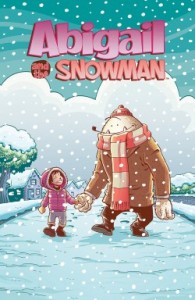Feed aggregator
Buddy System for the Buddy-less
I'm not a fantastic artist (quite the opposite), but I really love how cute this came out, and I wanted to share.
http://www.furaffinity.net/view/14871343/
Edit: I'm bad at labeling my reddit submissions..
submitted by Aion1125[link] [14 comments]
How could I improve the body in my drawing?
Roaring 20s? that was the CFz theme for 2011 :)(Video by http://vimeo.com/vilkatas)
A thank you, and a short question.
So, I've been here and have only started to become active recently, I posted my fursona yesterday, and I'd like to say, ever since I started looking around here, its been INCREDIBLE seeing the amount of support and acceptance that furries (at least in this sub) have for each other. Sure, we may bicker and fight from time to time, but in the end, we all accept and even like each other, no matter what race, sexual orientation, social class, or fursonas and suiters we are. Its a beatiful thing that society is trying to reach. That makes me overjoyed and proud to be a fur. You guys can give yourselves a paw or claw on the back.
As for my question: I'd like to start socializing with other furs. FA's registration is down, so does anyone know of any other good places or groups to introduce myself and my fursona? Or where to meet local furs? (I live in Connecticut.) Feel free to tell me about you too, me and my fursona are friendly.
submitted by Infamous0823[link] [12 comments]
minecraft minecraft minecraft!
Do any of you play minecraft? I've missed playing a ton, and would like to get back into it. I'm looking for a cool private server to play on!
submitted by kidinabearsuit[link] [19 comments]
Looking for Fursuit Music Video - Red Cat and White Cat
Hey folks,
I'm trying to find a video of two fursuiters [boyfriends iirc] dancing to a song. I saw it a year or two ago, and haven't been able to find it since. The one fursuiter is a red cat I think, and the other is a white something. They do synchronized dance to a cool electronic-ish song. Anyone know it?
submitted by Patpatthud[link] [3 comments]
New (sort of!) to the furry fandom, but having a difficult time finding friends within it.
Hey there!
I joined this subreddit a few months ago and I've been lurking mostly, but I decided to reach out and meet new people. :>
I've always liked anthros, played Furcadia religiously when I was a weird teenager, and loved role-playing. It wasn't until recently that I decided to mull up my own 'sona (named Sagira) and attend my first convention this year (RainFurrest '14!).
I'm active on both Skype & Tumblr, so if you'd like to add / follow me, feel free!
Skype: colaurful
Tumblr: calx.tumblr.com
submitted by l4ur[link] [12 comments]
Who are some of the best fursuit makers?
For as long as I've been in the fandom I've neglected that side, more or less. Who are the best makers out there, at least theme by theme? (Realistic, cartoony, etc)
Thanks :D
submitted by ObsoletePixel[link] [5 comments]
Die Young
Here is a great furry music video by the very talented Vivienne Medrano and if she isn’t in the fandom she damn well should be!
Furry Is Nervous about Adult Life without a Safety Net
Such a crush on this guy. Who is your fur crush?
Do You Want To Meet A Snowman?
Roger Langridge has made quite a name for himself with various anthropomorphic comics at Boom! Studios, including The Muppet Show, Snarked, and the recent Musical Monsters of Turkey Hollow. Well now he’s back with another creator-owned miniseries, Abigail and the Snowman. According to an article over at Comic Book Resources, this new series “…focuses on a girl moving to a new town and befriending a yeti named Claude. Unfortunately for the new friends, Claude happens to be an escapee from a nearby facility that wants him back. To keep her new pal safe, Abigail and Claude go on a journey to find his home. ” Look for the first full-color issue to hit stores in the middle of December.

image c. 2014 Boom! Studios
Haven't written anything in a while and would like suggestions.
I'm pretty new tO identifying with the fandom, and I thought "Why not doa shoe story?" So yeah. If you guys(who are all beautiful/adorable btw) have suggestions, I'd love a writing prompt.
submitted by heughcumber[link] [3 comments]
Looking for fursuit commissioner, anyone help lead me in the right direction?
I am in the market for a partial ranging between $300-400, and by partial I mean head, tail, and paws. Does anybody know a reputable commissioner that would be open for commissions within this month? Thanks so much fuzzbutts. :)
submitted by MisterGayUnicorn[link] [comment]







